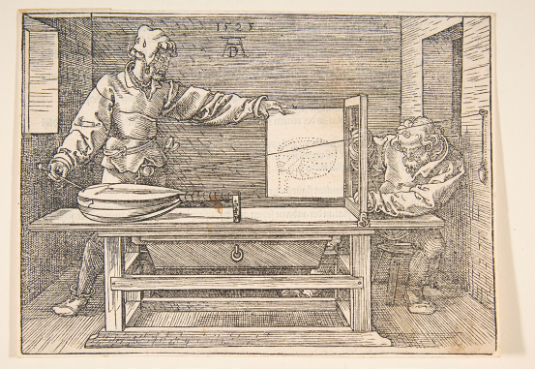
Techniques of Discovery: Cryptography and Design
##plugins.themes.immersion.article.figure##

Abstract
Among the core technologies forming the rich archaeology of computation, cryptography is perhaps a subject that has received little attention in architectural studies thus far. However, there are fruitful considerations to draw from a closer inspection of the vast repertoire of techniques that cryptography has developed over a period of about seven centuries. First of all, a deeper historical perspective will help frame cryptography as a technology for discovery rather than solely protecting military and diplomatic secrets. Secondly, these considerations can be of relevance to design as they offer thoughts for both conceptual reflections and practical applications. At a conceptual level, the symbolic, discrete computation accompanying the evolution of cryptographic methods – such as Alberti’s one in 1467 – marked a radical departure from the iconic semiotics of analogue machines. The non-mimetic nature of symbolic computation provided the technological means to significantly widen its range of applications and enhanced speculative thinking. Understood along these lines, cryptography found more general applications beyond concealing diplomatic secrets to provide a rigorous method for inquiry into unknown domains in order to make ‘noisy data’ intelligible. Finally, symbolic computation also provided more advanced techniques for abstraction that were also instrumental for constructing notational drawings, whose emergence coincided with the introduction of more advanced mathematical instruments in the renaissance.
The essay will discuss the key paradigmatic moments in the history of cryptography such as the polyalphabetic techniques proposed by L. B. Alberti in 1467 and the use of binary cryptography by Francis Bacon in 1605. Despite their distance from the present, these experiments provide a useful segue into a discussion on how the notion of cypher as a conceptual instrument accompanying the introduction of Machine Learning models in architectural and urban design.
Cover image: Albrecht Dürer, The Draughtsman of the Lute
References
- Bacon, Francis. The Advancement of Learning [1605]. Oxford : at the Clarendon Press, 1869.
- Boole, George. An Investigation of the Laws of Thought, on which are founded the mathematical theories of logic and probabilities. London: Walton & Maberly, 1854.
- Cache, Bernard. “Towards a Non-Standard Mode of Production”. In Projectiles. London: Architectural Association, 2011.
- Clody, Michael C.. “ Deciphering the Language of Nature: Cryptography, Secrecy, and Alterity in Francis Bacon”. Configurations, Volume 19, Number 1 (Winter 2011), p. 117-141.
- Evens, A. Logic of the Digital.London: Bloomsbury Academic, 2015.
- Hegel, Georg Wilhelm Friedrich. Science of Logic [1812-31]. Translated by A. V. Miller. London, NJ: Allen & Unwin, 1990.
- Link, David. Archaeology of Algorithmic Artefacts. Minneapolis: Univocal Publishing, 2016.
- Saussure, Ferdinand. Course of General Linguistics. Edited by C. Bally and A. Sechehaye, with the collaboration of A. Riedlinger; translated and annotated by W. Basking. 1st ed. 1916. London: Duckworth, 1959.
- Lloyd Strickland and Harry R. Lewis. Leibniz on Binary: The Invention of the Computer Arithmetic. Cambridge, Mass.: The MIT Press, 2022.
- Virno, Paolo. Saggio sulla Negazione: Per una Antropologia Linguistica. Turin: Bollati Boringhieri, 2013.
- Wilden, Anthony. System and Structure. London: Tavistock Publications, 1972.